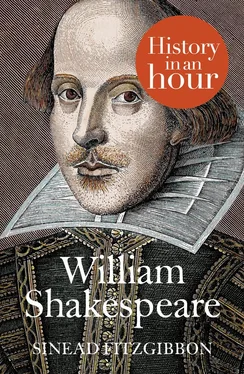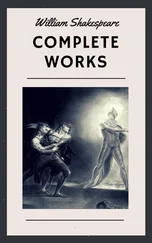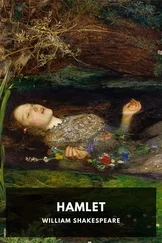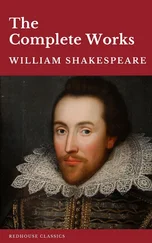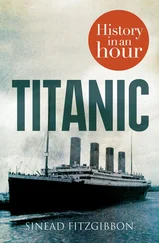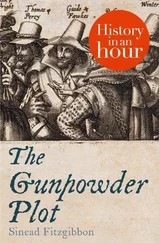Nor do we have any insight into what influenced his decision to abandon his country roots and head for the overcrowded capital city. Perhaps it was the pressures of providing for his growing family, or simply a desire to make a name for himself beyond the provincial town of his birth. Whatever the reason, turn up in London he did, and by 1592 he was already ruffling some feathers in the theatre world, as evinced by a pamphlet published that same year by a man named Robert Greene.
In addition to being a poet and a keen pamphleteer, Greene was a leading light in the University Wits, a group of late-sixteenth-century Oxbridge-educated writers whose number also included the likes of Christopher Marlowe, Thomas Nashe, John Lyly and George Peele. He was also close to death, and very ill-tempered. So ill-tempered, in fact, he took advantage of his impending demise to issue two pamphlets which were ostensibly a collection of his observations on life, but which were in reality nothing more than barely disguised potshots at his fellow writers.
The first pamphlet, which was called Greene’s Groat’s-Worth of Wit , contains little of interest to the common modern reader – with the exception, that is, of this one sentence hidden away in a forest of purple Elizabethan prose:
There is an upstart Crow, beautified with our feathers, that with his Tygers heart wrapt in a Players hide, supposes he is as well able to bombast out a blank verse as the best of you; and being an absolute Iohannes fac totum, is in his own conceit the only Shake-scene in a country.
This rather catty comment is clearly taking a swipe at some ‘upstart’ actor (or ‘player’), who, despite being nothing more than a jack-of-all-trades (‘Johannes fac totum’), believes himself to be a better poet than his university-educated counterparts. But how do we know this jibe was aimed at Shakespeare? Apart from the obvious allusion to ‘Shake-scene’, the ‘tygers heart wrapt in a players hide’ is a direct reference to Henry VI, Part III , which includes the line, ‘O tiger’s heart wrapped in a woman’s hide!’
This is important in a number of ways. Not only is it the first time we come across William Shakespeare in London, it is also evidence that by 1592 he was quite well established there, having worked as both an actor and a playwright. It also proves the Henry VI plays were among the first of the Shakespearean canon to be written. And so, quite unwittingly, the cantankerous Greene has done the ‘upstart’ a great favour – without his splenetic death-bed ravings, our knowledge of Shakespeare’s movements during the early 1590s would be much the poorer.
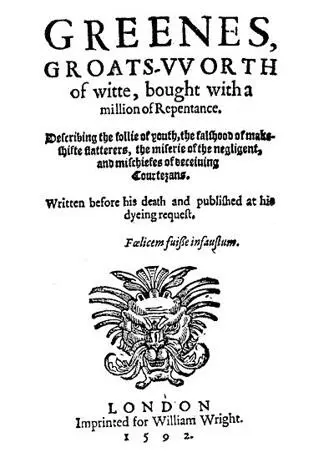
Frontispiece of Greene’s pamphlet
But just as the man from Stratford had begun to garner attention for his theatre work, his dramatic career was brought to a rather abrupt halt. In June 1592, a particularly virulent outbreak of plague hit London. As was common practice at the time, the city authorities ordered the closure of all theatres in an attempt to prevent the contagion spreading among the already beleaguered population, an order which remained in place until June 1594.
During this enforced two-year sabbatical, Shakespeare turned his attention to poetry, writing his two long narrative poems, Venus and Adonis and The Rape of Lucrece. While this foray into poetry may well have been a welcome creative outlet for him, the poems also served a more practical purpose – in the absence of income from the theatres they earned the writer some much-needed money. These poems, both commercially successful, were dedicated to Henry Wriothesley, the Earl of Southampton, which suggests that, for the first and only time in his twenty-five year writing career, Shakespeare sought (and presumably received) aristocratic patronage.
The Lord Chamberlain’s Men The Lord Chamberlain’s Men The King’s Men The Wooden O The Works The Autobiographical Author? The Affluent Years Shuffling Off This Mortal Coil The Contested Will Quartos, Folios and the Missing Plays The Authorship Debate Becoming the Bard Appendix 1: Key Players Appendix 2: Timeline of William Shakespeare 1564–1616 Appendix 3: An Approximate Timeline of the Complete Works c. 1590–1613 Got Another Hour? Copyright Конец ознакомительного фрагмента. Текст предоставлен ООО «ЛитРес». Прочитайте эту книгу целиком, купив полную легальную версию на ЛитРес. Безопасно оплатить книгу можно банковской картой Visa, MasterCard, Maestro, со счета мобильного телефона, с платежного терминала, в салоне МТС или Связной, через PayPal, WebMoney, Яндекс.Деньги, QIWI Кошелек, бонусными картами или другим удобным Вам способом. About the Publisher
Despite the demise of a number of acting troupes during the plague years (and the death of the country’s leading playwright, Christopher Marlowe, in 1593), the re-opening of the playhouses in 1594 heralded a golden age of theatre.
One of the driving forces behind this explosively creative and innovative period in theatrical history was a players’ company called the Lord Chamberlain’s Men. This troupe was established in 1594 under the patronage of Henry Carey, the Lord Chamberlain. Aside from a retinue of part-time actors, carpenters, seamstresses and other hired hands, the Lord Chamberlain’s Men had a core of eight ‘sharing’ members, who would receive a share of any profits earned, while also remaining liable for any debts incurred. Their number included the leading actor of the day, Richard Burbage; his father, and the actor-manager of The Theatre playhouse, James Burbage; William Kemp, the company clown who would play most of the comedic parts; and the up-and-coming playwright, William Shakespeare. The latter’s inclusion in the company was highly unusual for the time – normally, the sharers would be made up of actors only, while playwrights tended to work on a freelance basis, writing for any company who wished to buy their services.
That Shakespeare was accepted, at 30 years of age, as one of the eight founding ‘householders’ was a testament to the esteem in which he was held by his colleagues. It was also a savvy business decision on their part. Thanks to the talents of their in-house dramatist, whose works would henceforth be staged almost exclusively by them, the Lord Chamberlain’s Men not only succeeded, but flourished. The plays of William Shakespeare were popular and attracted large audiences – sometimes up to 2,000 paying customers per day, a figure which equated to about 1 per cent of the city’s total population.
And while the company undoubtedly benefitted from its association with Shakespeare, that the playwright chose to remain with the Lord Chamberlain’s Men for the entirety of his career suggests that he was also happy with the arrangement.
The King’s Men The King’s Men The Wooden O The Works The Autobiographical Author? The Affluent Years Shuffling Off This Mortal Coil The Contested Will Quartos, Folios and the Missing Plays The Authorship Debate Becoming the Bard Appendix 1: Key Players Appendix 2: Timeline of William Shakespeare 1564–1616 Appendix 3: An Approximate Timeline of the Complete Works c. 1590–1613 Got Another Hour? Copyright Конец ознакомительного фрагмента. Текст предоставлен ООО «ЛитРес». Прочитайте эту книгу целиком, купив полную легальную версию на ЛитРес. Безопасно оплатить книгу можно банковской картой Visa, MasterCard, Maestro, со счета мобильного телефона, с платежного терминала, в салоне МТС или Связной, через PayPal, WebMoney, Яндекс.Деньги, QIWI Кошелек, бонусными картами или другим удобным Вам способом. About the Publisher
Читать дальше
